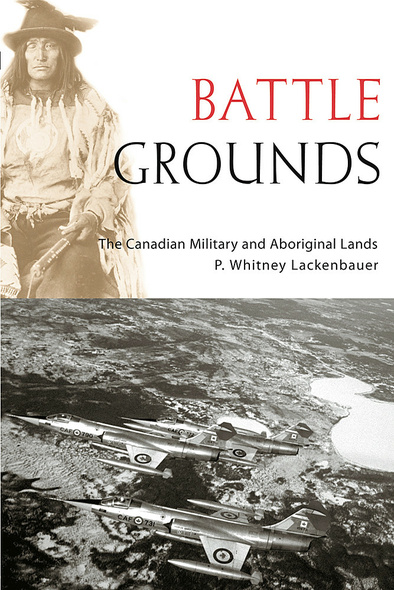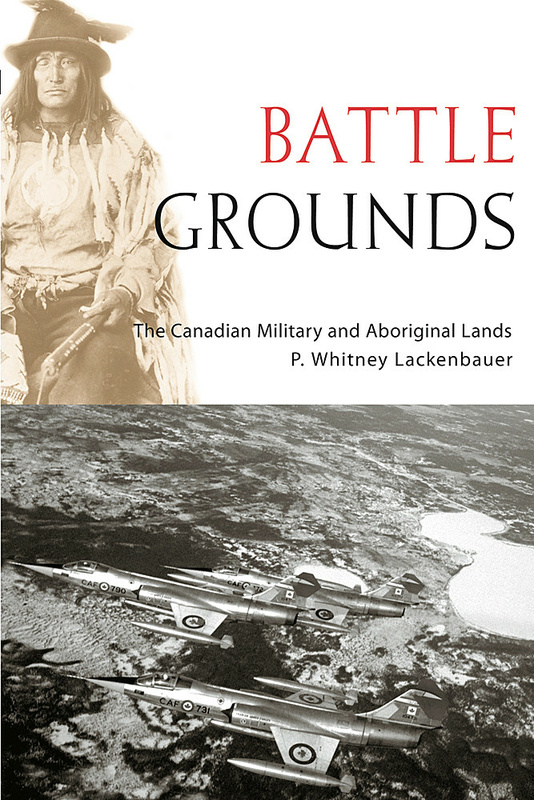
368 pages, 6 1/4 x 9 1/4
20 maps, 32 b&w illustrations
Paperback
Release Date:01 Jul 2007
ISBN:9780774813167
Hardcover
Release Date:13 Dec 2006
ISBN:9780774813150
PDF
Release Date:01 Jan 2008
ISBN:9780774855266
Battle Grounds
The Canadian Military and Aboriginal Lands
UBC Press
Base closures, use of airspace for weapons testing and low-level flying, environmental awareness, and Aboriginal land claims have focused attention in recent years on the use of Native lands for military training. But is the military’s interest in Aboriginal lands new? Battle Grounds analyzes a century of government–Aboriginal interaction and negotiation to explore how the Canadian military came to use Aboriginal lands for training. It examines what the process reveals about the larger and evolving relationship between governments and Native communities, and how increasing Aboriginal assertiveness and activism have affected the issue.
This timely text will be of great assistance to those assisting the First Nations in the recovery of their ancestral lands. With maps, tables and illustrations, the author takes the reader through fifty years of native land takeovers by the Canadian military. This may well be the handbook for those assisting in land recovery or lease variation.
... readers will be rewarded by a spirited and provocative introduction and conclusion and plenty of fresh research.
Base closures, use of airspace for weapons testing and low-level flying, environmental awareness, and Aboriginal land claims have focused attention in recent years on the use of Native lands for military training. But is the military’s interest in Aboriginal lands new? Battle Grounds analyzes a century of government-Aboriginal interaction and negotiation to explore how the Canadian military came to use Aboriginal lands for training. It examines what the process reveals about the larger and evolving relationship between governments and Aboriginal communities and how increasing Aboriginal assertiveness and activism have affected the issue.
Whitney Lackenbauer’s Battle Grounds surveys the complex world of Native-military relations in twentieth-century Canada. Skillfully parsing the diverse forces at work in this relationship, his account is an astute reinterpretation of government-Aboriginal interactions that greatly enriches scholarly writing on relations between Natives and newcomers.
P. Whitney Lackenbauer is an assistant professor in the Department of History at St. Jerome’s University
Preface
Introduction
1 A Road to Nowhere? The Search for Sites in British Columbia, 1907-30
2 Governmental Uncertainty: The Militia and the Sarcee Reserve, 1908-39
3 “Pay No Attention to Sero”: Imperial Flying Training at Tyendinaga, 1917-18
4 The Thin Edge of a Wedge? The British Commonwealth Air Training Plan and Aboriginal Lands, 1940-45
5 Combined Operation: Creating Camp Ipperwash, 1942-45
6 The Cold War at Cold Lake: The Primrose Lake Air Weapons Range, 1951-65
7 Into the Driver’s Seat? The Department of National Defence and the Sarcee Band, 1945-82
8 Renegotiating Relationships: Competing Claims in the 1970s and 1980s
9 Closing Out the Century Reflections
Appendices
Notes
Selected Bibliography
Index




